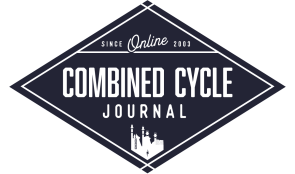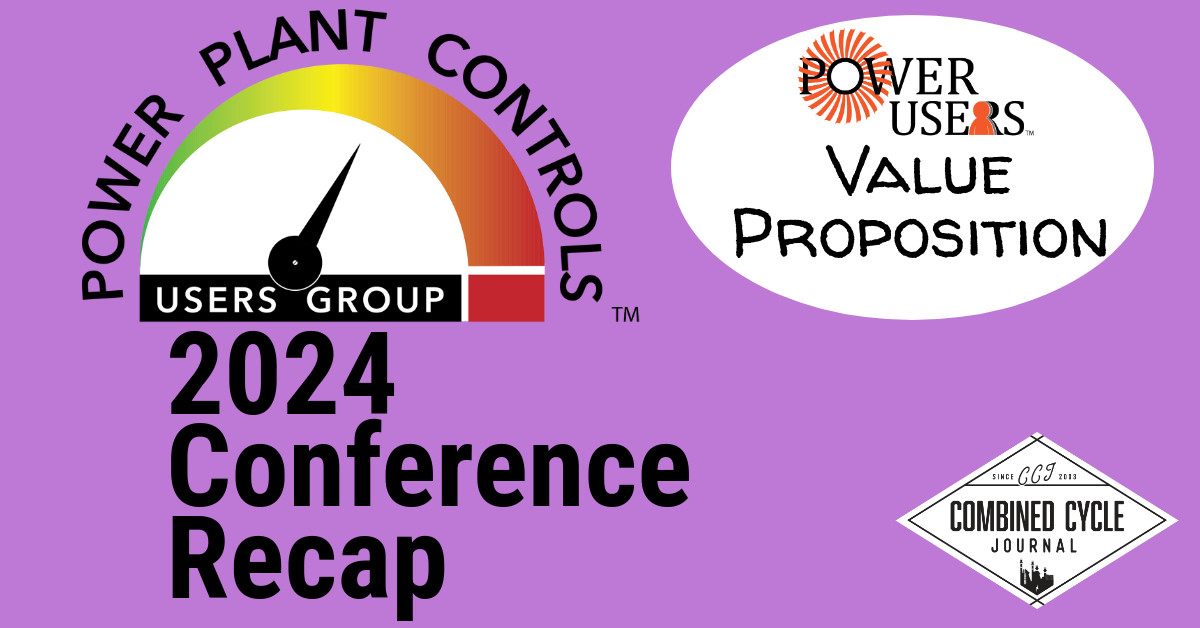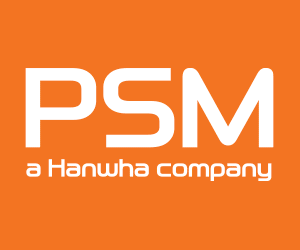“Controls Items for Consideration” collects round-robin thoughts and ideas on Mark series controls from one specialist representing one of the largest owner/operators in the nation. Topics include logic for verifying valve functionality prior to unit operation, end of support for HMI (human-machine interface) Windows Server 2012 R2 Operating System and network switches, simulators, lube oil system tank volume, dual hydrogen control panel enhancements, tuning tool, and password control for cybersecurity. Most of the slides are screen shots likely most meaningful to control system experts.
Regarding the HMI, sites were notified of the support termination with little time to react. Rather than opt for the OEM’s proposed solution, with its protracted procure and install schedule, one site purchased licenses from the OEM, server boxes from Dell, and configured the system themselves, cutting the lead time by 32 months and the cost by an order of magnitude. Similar cost and schedule results were achieved by purchasing and configuring network switches directly from the supplier and building simulators in-house.
Long term advantage of this approach is acquiring and retaining the site/owner knowledge necessary to maintain and troubleshoot these components going forward.
“Third-Party Controls Upgrade” is an in-depth project recap outlining a successful multi-vendor controls modernization effort at a U.S. combined-cycle plant. The presentation highlights how a carefully planned and collaboratively executed upgrade delivered new turbine controls, excitation system enhancements, and static starter integration—all without relying on OEM packages.
Project scope included:
- Turbine controls replacement with ABB’s modern platform
- Excitation system upgrades integrating AP4’s DFE solution for a Basler system
- Static starter modernization incorporating TMEIC LCI with AP4 crossover interface
The implementation team emphasized cross-disciplinary planning as a cornerstone of success. This included:
- Full scope walkdowns and risk identification prior to outage
- Detailed drawing reviews, factory acceptance testing (FAT), and loop/commissioning validations
- Network documentation and secure access protocols
- Explicit division-of-responsibility mapping across turbine, excitation, and starter systems
Of note, the PSM AutoTune system was already in place, providing a performance foundation during the GTOP 3.0 installation. This continuity allowed the project team to focus more on controls integration and less on combustion optimization.
Key takeaways for others considering third-party integration projects:
- Advance planning and communication mitigate downstream surprises
- Define handoff points and responsibilities clearly between controls and subsystem vendors
- Secure, documented networks with reliable remote access are non-negotiable
- Quality assurance steps (FAT, cold commissioning, loop checks) must be rigidly followed
The real value to anyone embarking on a similar effort is in accessing the full slide deck for screen captures of operator interfaces, system layouts, and vendor-specific integration steps.
“Generator Basics” is a primer session demystifies the generator by returning to its physical and magnetic principles, offering a visual and conceptual tour of how power is made—ideal for technicians, engineers in training, and even seasoned O&M staff seeking a refresher. The slides are rich in illustrations and analogies to reinforce understanding.
Core concepts covered:
- Magnetic flux and induced voltage
- Electromagnetic rotor construction
- Stator and winding design
- Cooling considerations
The presentation closes with a cautionary slide of a damaged generator, underscoring what can go wrong when excitation or synchronization are mishandled, a fitting reminder that even fundamental components deserve daily diligence.
“Exciter Fundamentals” is a valuable follow-on from the primer above, offering insight into generator control. Excitation systems may not be front-of-mind during day-to-day plant operations, but they are critical to stable generator output and grid compliance.
This fundamentals refresher, presented by a senior controls specialist, provides a compact yet thorough walkthrough of exciter types, core components, and practical O&M considerations—especially valuable for engineers newer to generator control systems or those facing legacy system upgrades.
The presentation begins with a simplified definition: Exciters are systems that supply the DC field current to the synchronous generator’s rotor. It then explores how excitation impacts generator performance with particular attention to voltage regulation, VAR support, and system stability before breaking down the two primary exciter types:
- Static exciters, where power for field excitation is drawn from the generator terminals or auxiliary supply and passed through a controlled rectifier bridge
- Brushless exciters, which eliminate sliding electrical contacts by using a rotating exciter mounted on the same shaft as the generator, coupled with a rotating rectifier assembly
Supporting slides offer clear block diagrams and visual schematics of key components such as automatic voltage regulators (AVRs), power potential transformers (PPTs), field breakers, and rectifier bridges. The role of the AVR, the brain of the exciter, is emphasized in terms of keeping terminal voltage within limits under changing loads.
The presentation also addresses field flashing for initiating excitation when residual magnetism is low, power system stabilizers (PSS) for damping oscillations and maintaining synchronism, and alarm/protection strategies for overvoltage, undervoltage, and loss of excitation.
Many slides include system diagrams and wiring visuals, best interpreted with reference to the full downloadable deck. Plants considering digital excitation upgrades or troubleshooting AVR behavior will find this overview a helpful baseline for internal discussions and vendor interactions.
PPCUG VENDOR PRESENTATIONS
Mind the Gap-OT Security, John Downing, AP4 Group
Presentation first assesses recent global attacks on power grids, grid intrusions, and ransomware attacks; then reviews OT security challenges for legacy systems and proprietary protocols and standards, including regulatory compliance, emerging threats, and resource constraints; and finally offers generic best practices to counter and reduce cyber threats.
Understanding Combustion DLN Tuning, John Downing, AP4 Group
First few slides remind the viewer how much more complex a dry low (DLN) NOx combustor is compared to a standard diffusion burner with water or steam injection, then covers some basics like NOx and CO emissions production, the temperature control curve as it relates to load cycling, tuning and autotuning, and importance of combustion dynamics.
Understanding Gas Turbine Controls and Protection, John Downing, AP4 Group
This is the type of slide deck that validates for chemical and mechanical engineers why they stayed away from electrical engineering, computer science, and control system design. Joking aside, anyone needing a primer in GT controls will benefit from this deck, which cover HMI, controllers, I/O, sensors and instruments, final control devices (e.g., valves), software, control parameters, permissives, runbacks and trips, protection and monitoring, excitation, and cybersecurity.
Notable slides include network topology, ladder, and function block diagrams; the “secret” control blocks, and the “view from an air molecule” as to what happens as it proceeds through the centerline of the GT.
One session during the PPCUG GE Day is worth noting, an update on fleet controls issues since last year and associated TILs. As the presentations are not available at the Power Users site, and the language and acronyms used by the controls folks may not be familiar to non-control engineers and techs, listed here are the referenced documents and/or topics discussed:
- TIL 2441-R1 and GEK 1163– Lower Exciter overcurrent limit and arc flashover
- PSSB 20231014A – Starting motor torque converter fails to reach purge speed
- TIL2500 – License ST application corruption (March 2024)
- UCSx Controller unexpected reboot and inability to boot – one user mentioned two reboots caused by this, another mentioned seven reboots, and a third mentioned 15 caused by this issue
- GEH 6808 – redundancy checks in Control ST Software Suite
- TIL2290 – addresses bit error due to corrupt NAND flash failure to boot
- TIL2517 – Control server maintenance guidelines addressing cache disk degradation
Closing reminder. End users registered at www.powerusers.org are encouraged to download the full slide decks from the 2024 conference and put the shared experience and lessons learned to immediate use. The material spans everything from outage planning and controls upgrades to generator rewinds and cold-weather prep—practical, field-tested guidance that speaks directly to today’s plant challenges. And if you’re not already planning to attend the 2025 Combined Conference, set for August 25–28 in Washington DC, now’s the time. Few events offer as much actionable content, peer exchange, and expert access in one place.
More from the 2024 Combined Conference:
- Life-long learning abounds across five user group conferences @ Power Users Combined Conference
- Addressing weather resilience, risk management, and outage execution @ CCUG
- Focus on D11 strategies, EHC pitfalls, and skilled labor shortages @ STUG
- Generator users share failures, fixes, and forward planning @ GUG
- Advanced controls strategy and fundamentals @ PPCUG







